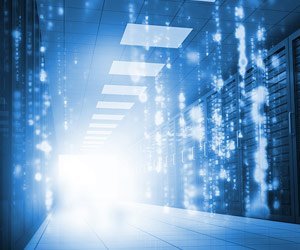Digital transformation initiatives in most industries have accelerated over the past year as organizations have had to adapt quickly and unexpectedly to a sharp increase in online business activity, remote work, digital supply chain modernization and overall economic volatility.
By 2022—just next year—65% of global GDP will be digitized, according to IDC. By 2023, 75% of organizations will have comprehensive digital transformation roadmaps.
Hybrid cloud has been and continues to be a catalyst and enabler of this change. Hybrid cloud provides a way for IT to embrace the benefits of public cloud agility, simplicity and scalability without sacrificing the control, performance and security of on-premises infrastructure.
However, while organizations need the agility to adapt to new market forces, they can’t take risks on unproven models that disrupt operations and result in unforeseen costs—without delivering promised benefits. Already, 77% of organizations have repatriated cloud-resident mission-critical workloads back to the data center, according to Enterprise Strategy Group.
As digital transformation accelerates across all industries, IT teams now more than ever are under pressure to find the fastest, simplest and most secure path to the hybrid cloud.
What to look for in a solution
In today’s environment, the fastest, simplest and most secure path to hybrid cloud is to use familiar tools and technologies in a hybrid cloud platform that provides a consistent operating model and operating efficiencies from the data center to multiple clouds to edge locations.
In addition, because organizations often deploy hybrid cloud as a path for application modernization, another key factor is to use a platform that supports cloud-native applications such as containerized architectures and Kubernetes orchestration alongside traditional virtual machine architectures.
When it comes to delivering a fast, secure, efficient and modern path to hybrid cloud, VMware Cloud Foundation on Dell EMC VxRail offers innovations and advantages that can’t be matched by other vendors.
These advantages stem from the deep integration between VxRail and VMware Cloud Foundation, as well as the common commitment of Dell Technologies and VMware to hybrid cloud innovation and hyperconverged infrastructure. Dell EMC VxRail is the only jointly engineered HCI system with deep VMware Cloud Foundation integration.
This delivers a unique experience, with deployment and management of clusters from a single, familiar user interface, as well as automated, end-to-end lifecycle management to ensure VxRail clusters remain in continuously validated states.
Key features and capabilities include:
- Integrated end-to-end lifecycle management: A key differentiator is full-stack integrity. This means both the HCI layer and VMware cloud software stack are deeply integrated to provide a single platform for turnkey automated lifecycle management. This enables rapid, full-stack upgrading and patching; software and hardware updates as a fully integrated system; and validated version compatibility, with the ability to skip releases and patches.
- Simplified, streamlined and automated operations: VMware Cloud Foundation on VxRail offers many exclusive jointly engineered integration features that simplify, streamline and automate operations of the entire software-defined data center (SDDC) from Day 0 through Day 2 operations. Key elements include:
- VxRail Manager, the primary management and automation tool used for VxRail clusters and end-to-end lifecycle management.
- Cloud Builder for VxRail, a standardized automation tool for configuring VxRail according to VMware’s SDDC best practices and standardized architecture.
- SDDC Manager, which is integrated with VxRail Manager to streamline how the layers of the stack are managed, creating a consistent and familiar operating experience for VxRail customers.
- A single source of system-level support for fully integrated VxRail systems, including vSAN, vSphere, HCI system software and all hardware. This enables IT teams to free internal resources to focus on growth initiatives, while leveraging Dell and VMware expertise to improve system performance and stability and maximize workload availability. Customers can also take advantage of Dell and VMware consulting, deployment and support services, as well as inclusive consumption-based pricing models.
In addition, VMware Cloud Foundation on VxRail customers can empower cloud-native application development in their hybrid cloud environments now that vSphere with Kubernetes is included as part of VMware Cloud Foundation.
The business benefits of this tight integration are exceptional: According to a recent study by IDC, customers of VMware Cloud Foundation on Dell EMC VxRail have achieved a 452% five-year return on investment with 10 months to payback; a 114% increase in new applications developed per year; 44% faster deployment of VMs; 72% lower operating costs; and a 66% increase in team efficiency. Link to article: How to Drive Exceptional Business Value From Your Hyperconverged Infrastructure.
Taking the next step
Hybrid cloud is an essential element of IT modernization and digital transformation. Organizations can achieve significant business advantages by moving quickly, easily and securely to the hybrid cloud, using familiar tools and a common operating model from the data center to the cloud to the edge.
Because of the deep integration between VxRail and VMware, customers of VMware Cloud Foundation on Dell EMC VxRail can move to hybrid cloud with ease and efficiency other solutions can’t match. To find out more about how VMware Cloud on Dell EMC VxRail can strengthen your hybrid cloud initiatives, please visit Dell Technologies.

